Rimowa – A Travel Classic and Watch Journalist Favorite
Rimowa, the suitcase of choice for globetrotters and those who travel frequently. But what makes them so special? For this instalment of our Weekend Read, we talk about this travel classic and why it is favored by many watch journalists.
Journalists, like many other professionals, are frequently on the road. Sometimes for longer periods of time but more often than not on shorter 3 to 5-days trips. Like the title of the classic 1987 comedy with Steve Martin and John Candy; Planes, Trains, and Automobiles are all among our means of transpiration. We learned how to pack efficiently and fast. Apart from our clothes, pen, notepad, laptop, various chargers, watch rolls and other EDC are all part of our luggage’s contents.
Rimowa
But what luggage do we use? Some travel with leather holdalls, others go with duffle bags or an everyday suitcase. Some of us – and this goes for almost the whole Fratello crew – have taken our turns with legendary German luggage manufacturer; Rimowa. You know, those unmistakable aluminium suitcases you often see at airports. What makes Rimowa so special? Is it a must-have for frequent travellers or just a trendy fashion statement?
Trusted Luggage
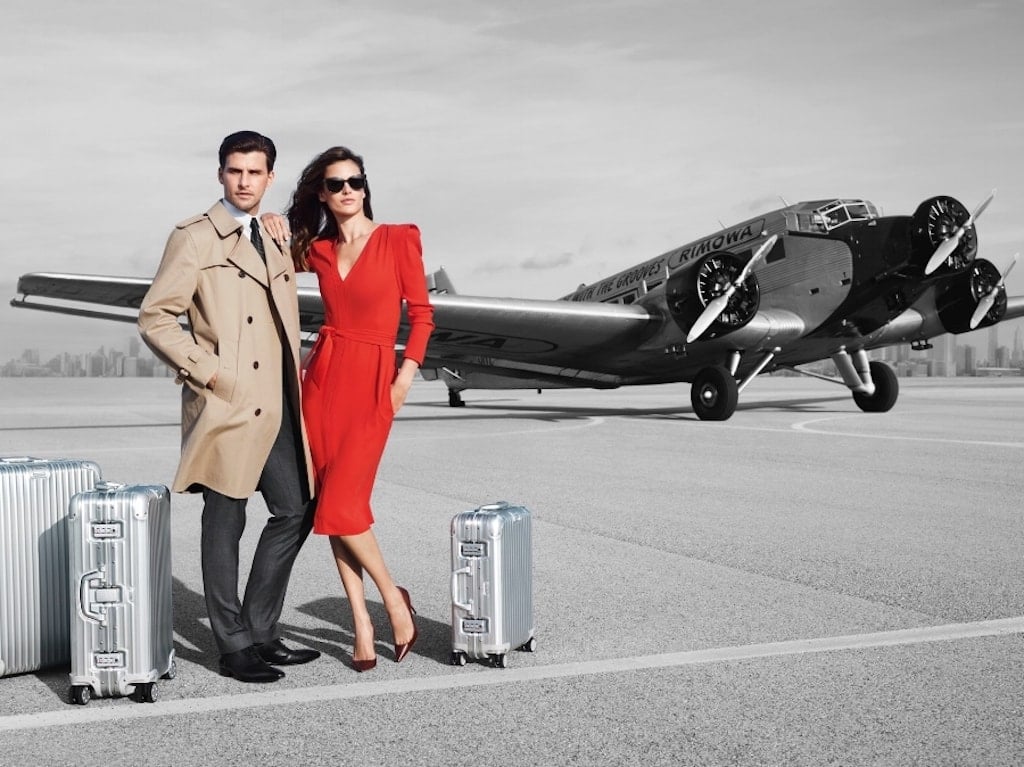
Photo: Rimowa
To start with, Rimowa products are not cheap. As an example, a Rimowa Cabin Multi Wheel (size 55 x 40 x 23) – one of the best sellers of the brand – will set you back about €800. While the suitcase is surprisingly light at 4.3kgs, takes as much as 35L of content, made of sturdy aluminum and comes with a 5-year warranty it is still a rather pricey purchase. Surely, part of the price comes from the history and heritage of Rimowa being a trusted luggage maker for over 100 years. What is more important though, is that Rimowa products are simply of great quality. Sure, they get banged up or scratched, but that’s it. They won’t break easily. Go and search on any online market platform. You will find 10-15 years old suitcases that, while they indeed look used, function perfectly.
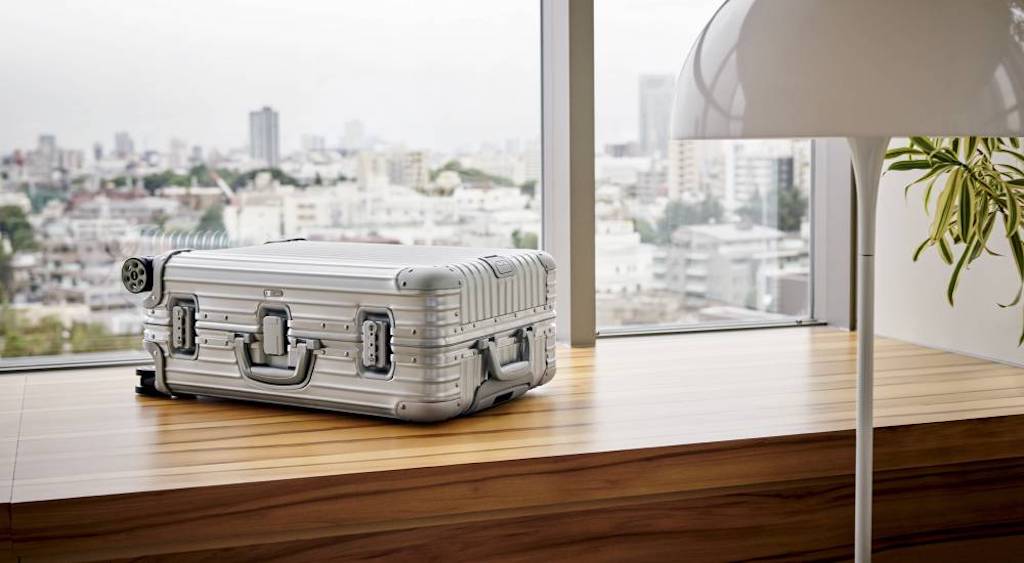
Photo: LVMH
Since 1898
Cologne, in the west part of Germany close to the Dutch border, is famous for many things. Large companies like Lufthansa or Ford-Europe have their headquarters here. The University of Cologne is one of the oldest universities in the continent and the Cologne Cathedral is a sight to behold. Cologne also happens to be the hometown of luxury luggage manufacturer and (now) LVMH group member, Rimowa. The company was established by Paul Morszeck and Heinrich Görtz in 1898. They specialize in travel cases, hat boxes and suitcases for cars. Made of plywood, cardboard, and leather the cases are extremely lightweight and sturdy for the times. 2 years later Görtz leaves (Görtz & Morszeck at the time) leaving Paul Morszeck as the only director. The name of the new corporation; Kofferfabrik Paul Morszeck. Business is going well for the Cologne brand, their products become known among high society.
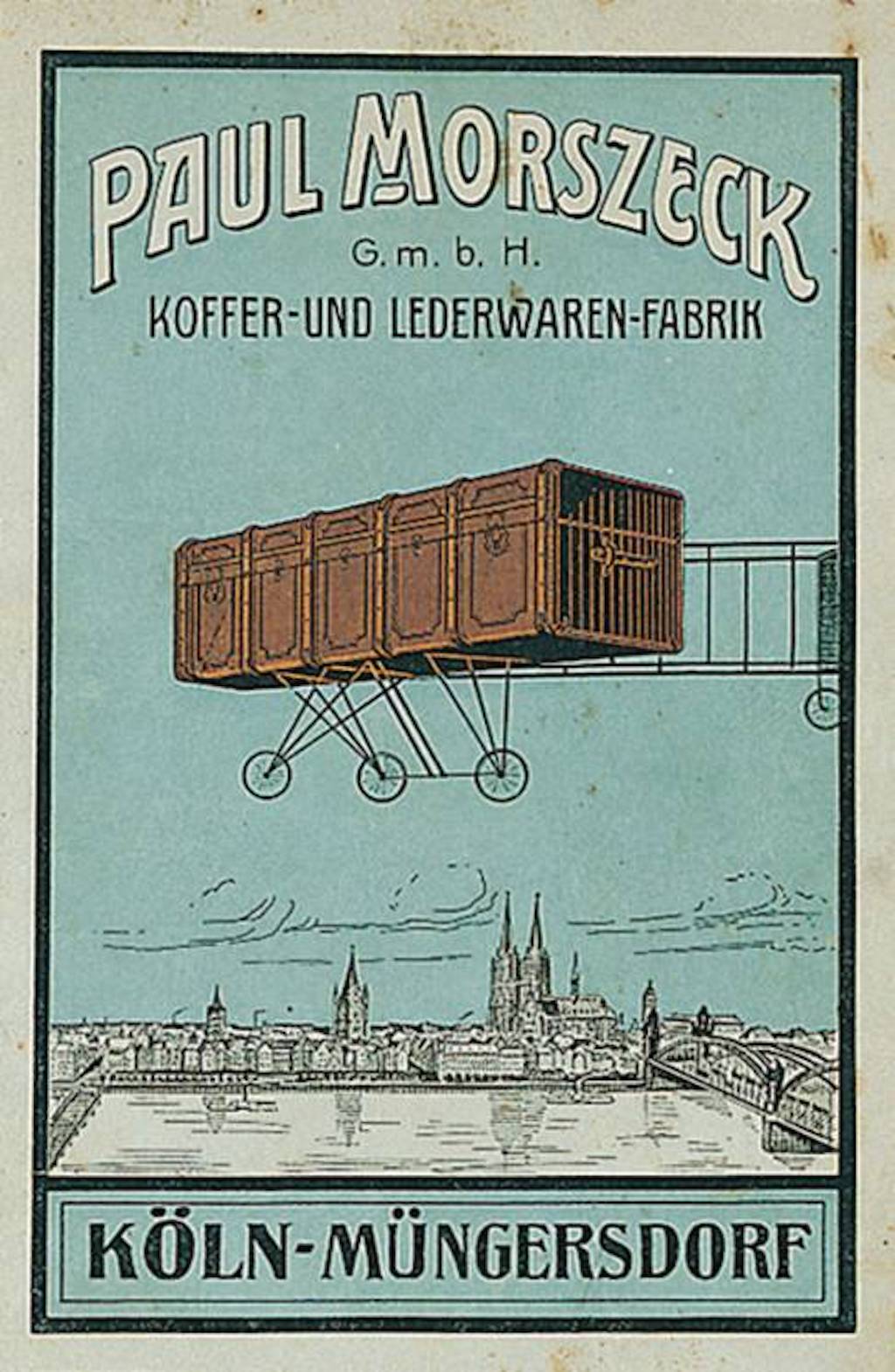
Early Paul Morszeck advertising sign – Photo: Rimowa
Richard Morszeck, son of Paul Morszeck, who works with his father in the family business registers a new brand name in 1931. It’s an acronym of his name and business; Richard Morszeck Ware. Through the 1930’s Richard experiments with various materials to find a composition that is durable and light. He manages to produce a suitcase of aluminum as early as 1937. This would pave the way for Rimowa’s success. During the Second World War, a fire in the factory destroys all flammable materials leaving the aluminum cases intact. The disaster shows Morszeck how tough this alloy is. Rimowa would never return to their old materials. From this point on they produce aluminum suitcases exclusively marking a new era for the brand. After the war, Rimowa reinstates their damaged factory buildings and production. They would leave this location in 1986 when they move to the current HQ.
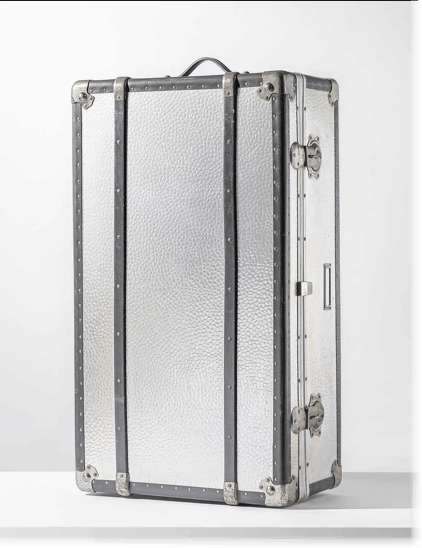
A vintage Rimowa suitcase before it received the groove pattern – Photo: Rimowa
From Junkers to suitcases
The Junkers F.13 was the world’s first all-metal commercial aircraft. Produced between 1919 and 1932 it served as a small, passenger transport plane for almost 20 years. It could accommodate 6 people (2 crew, 4 passengers) with a 1400 km range. At its time the Junkers F.13 was an expensive flying limousine. Due to its constriction and materials used the plane was extremely lightweight and efficient. It quickly became a popular toy for the rich and famous. The Junkers F.13 was also the inspiration for the looks Rimowa luggage are known for worldwide today. The plane’s parallel folded (to stabilize the outer cover) aluminum panels were the influence for the signature groove covers of Rimowa suitcases. The year was 1950 and the recipe for Rimowa’s success was already assembled; a grey aluminum suitcase with a grooved outer side. Like the plane, Rimowa suitcases became the favorites of the upper class.
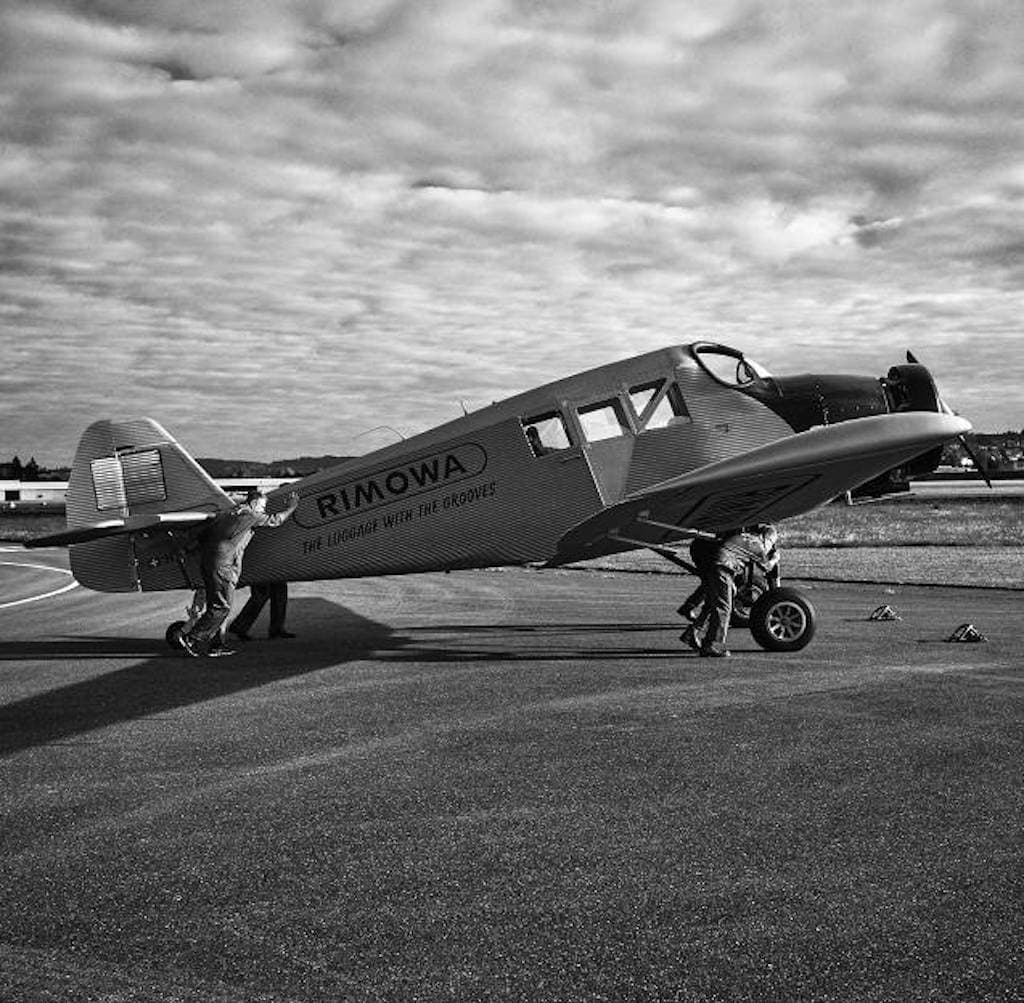
An original Junker F13 rebuilt by Rimowa – Photo:Rimowa
Like father like son
Just like Paul Morszeck, who brought his son, Richard into the family business, Richard also took his son Dieter to work with him. Dieter Morszeck, who was 19 at the time, joined Rimowa in 1972. Dieter was somewhat of a renaissance man. Other than being a member of the management he carried a pilot’s license and was an avid photographer. The latter inspired him to develop a waterproof and dustproof case that is able to withstand tropical heat and arctic cold equally. The Rimowa Tropicana protected expensive equipment and had the typical Rimowa suitcase look. Richard groomed Dieter into a successful leader who took over the company from his father in 1981. Dieter continued in the path of bold decisions his father and grandfather have started decades earlier. The result of his vocation; new Rimowa Polycarbonate suitcases came to the market in 2000.
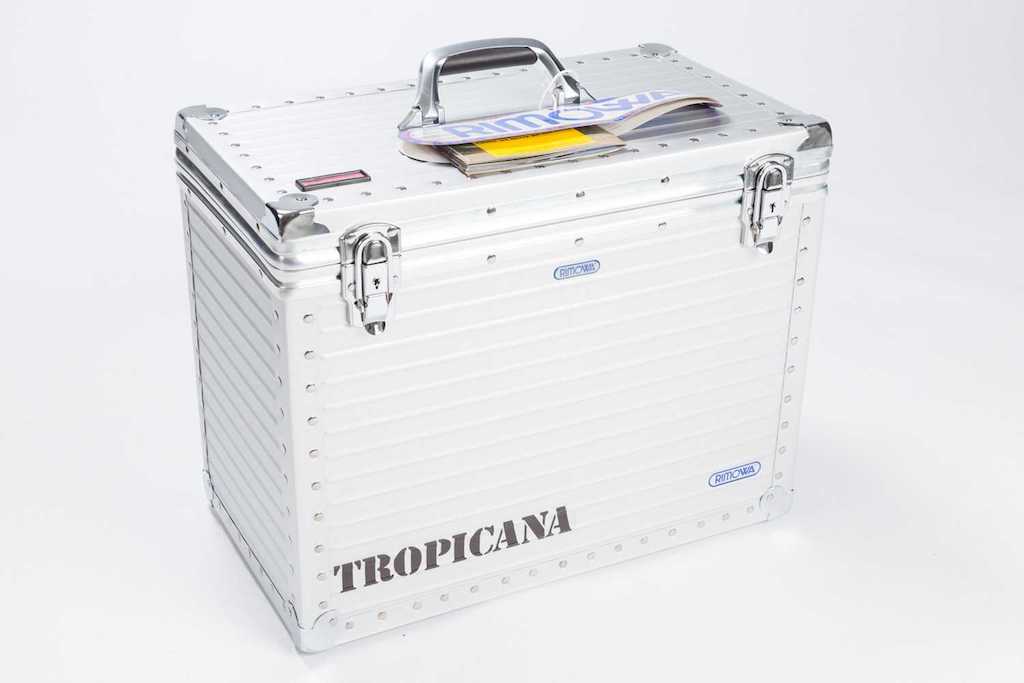
Rimowa Tropicana 361 – Photo:Tictail.com
Polycarbonate: aluminum of the 2000’s
Polycarbonate has many positive properties Rimowa could take advantage of. To start with, the material can withstand extreme temperatures (both hot and cold). It is also very light but still durable. As a matter of fact, polycarbonate luggage is lighter than aluminum. Already 10 years ago Rimowa sold almost half a million suitcases. The majority of them being polycarbonate. These items are cheaper than the average Rimowa aluminum (Topas or Classic) cases, they come in a number of colors and sizes. Polycarbonate boosted sales for Rimowa since more and more could buy into the coveted luxury that the brand had been offering for its customers for decades. Furthermore, polycarbonate and aluminum – as well as other Rimowa cases – alike now have TSA locks for easier access for faster and more convenient security inspections during travel.
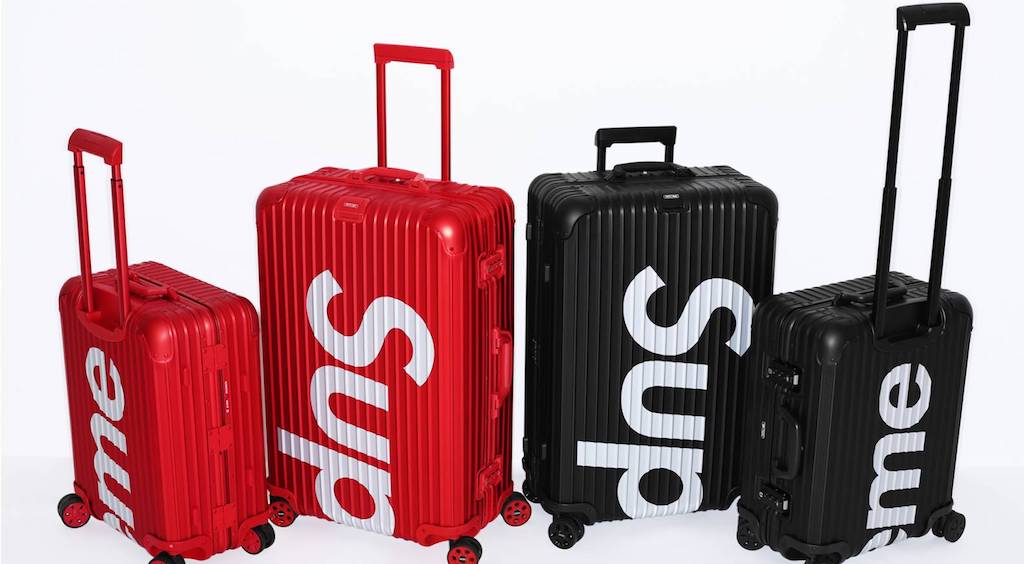
One of Rimowa’s many new collaborations. This time with streetwear brand, Supreme – Photo: Rimowa
Rimowa Today
As of today, Rimowa’s production spans over 2 continents in 4 countries. While the headquarters remained in Cologne Germany, three other factories were opened. The other European facility is in the Czech Republic. The two overseas are both on the American continent; in Canada and in Brazil. Rimowa arrived to another milestone in its history in 2016 when luxury conglomerate LVMH bought 80% of the company’s shares for €640 million. Dieter Morszeck remained CEO and LVMH appointed a Co-CEO for the brand in the person of Alexandre Arnault, the 25-year old son of LVMH CEO and Chairman Bernard Arnault. With the step in from Alexandre the brand broadened its focus opening towards the younger generation and street fashion aficionados. They achieved this through collaboration with popular brands such as Supreme and Off-White. Music mogul Pharrell Williams and Brazilian supermodel Alessandra Ambrosio are also among Rimowa’s friends of the brand.
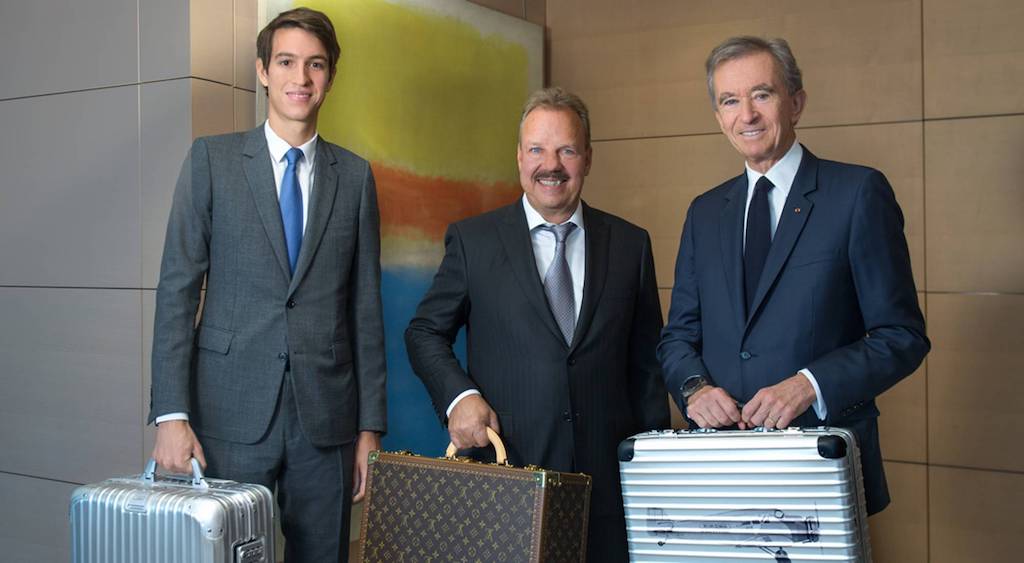
Alexandre Arnault (Rimowa Co-CEO), Dieter Morszeck (Rimowa Co-CEO) and Bernard Arnault (LVMH CEO) from left to right – Photo: LVMH
Design evergreen
Let’s stop for a second and play a game, shall we? Tell me if you can, what’s common between a Rolex Submariner, a pair of Adidas Stan Smith sneakers, 694 Persol shades and a Rimowa Classic suitcase? If you can answer this question you’ve probably solved the mystery. Why these items are so successful has a lot to do with their design. Particularly, that their looks – with minor changes and alterations – stayed the same for decades eventually making them timeless. This is a common feature between all the above-listed items. A Rimowa from last year looks strikingly similar to a suitcase from 1978. Apart from the emotional connection (a son would buy the same brand of a suitcase he would see his dad travel with decades earlier) this also serves as a reassuring factor that the item stayed the same for a reason; because it worked.
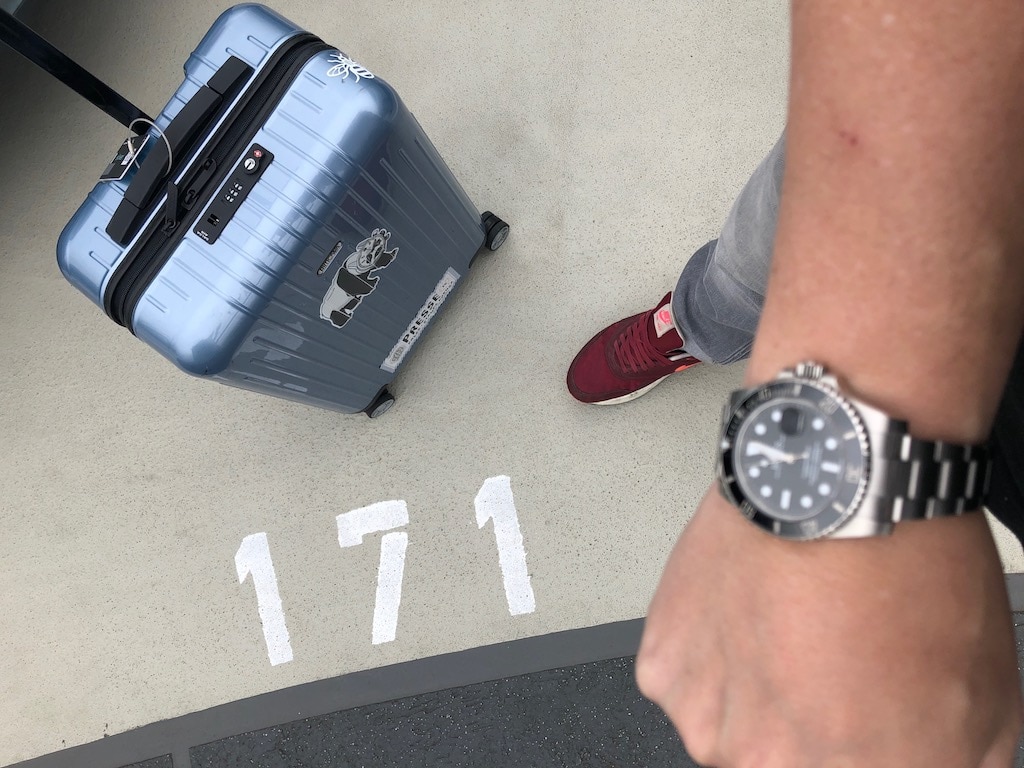
Design icons; Rimowa, Rolex and Nike being sported by our very own Bert
No changes were needed to the design or the core of the product other than the apparent technical improvements that came with time such as better bearings, stronger nylon straps and so on. Of course, looks is not enough if the item is not utilitarian. Design and functionality must go hand in hand. This could be one reason Rimowa is so successful. The fact that it does not only look good but actually works as it should. Though it might be a cliché to say that we are living in a consumer society, it is very true. To prove this I asked a few of my colleagues from the watch industry to send me their Rimowa’s and tell me what they think about the brand.
Robert-Jan Broer
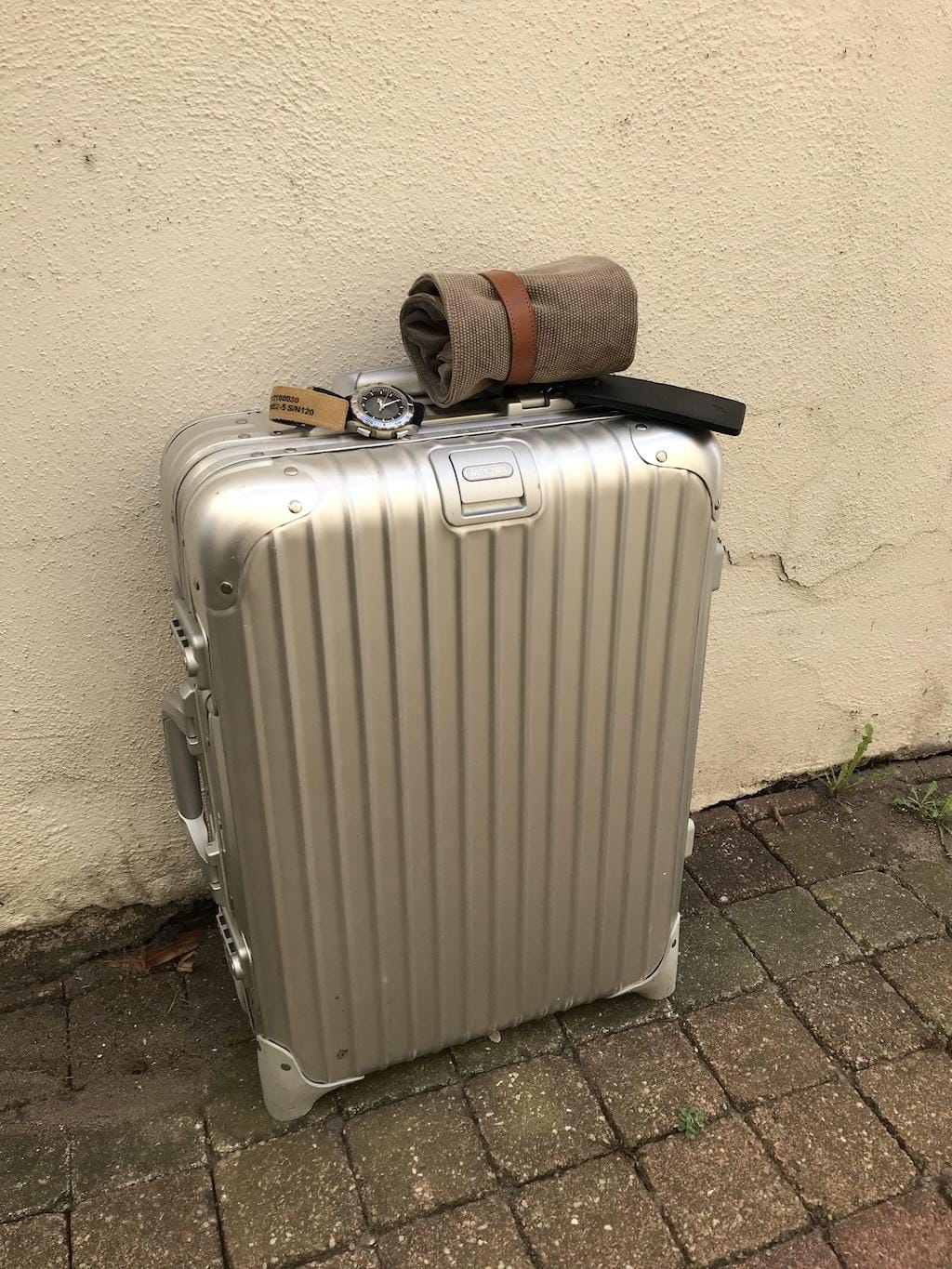
RJ’s Rimowa Topas Cabin
In the past, I worked as an information security consultant for one of the big auditing firms and I kept buying new suitcases (my record is at 6 in one year). I learned that Samsonite suitcases weren’t so indestructible after all. Also, I carried a weekend bag with me as cabin luggage. I hated it when people were stuffing their bags with violence in the overhead compartments in aeroplanes (I could hear my laptop and other equipment making squeaky noises and making me worried about my watch roll inside). It made me decide to buy Rimowa suitcases. I use the Salsa Air for the regular luggage (I have them in two sizes) and the aluminium Topas trolley as cabin luggage. A perfect travel companion and I wonder why it took me so long to decide to spend some money on these, they are awesome.
Michael Stockton
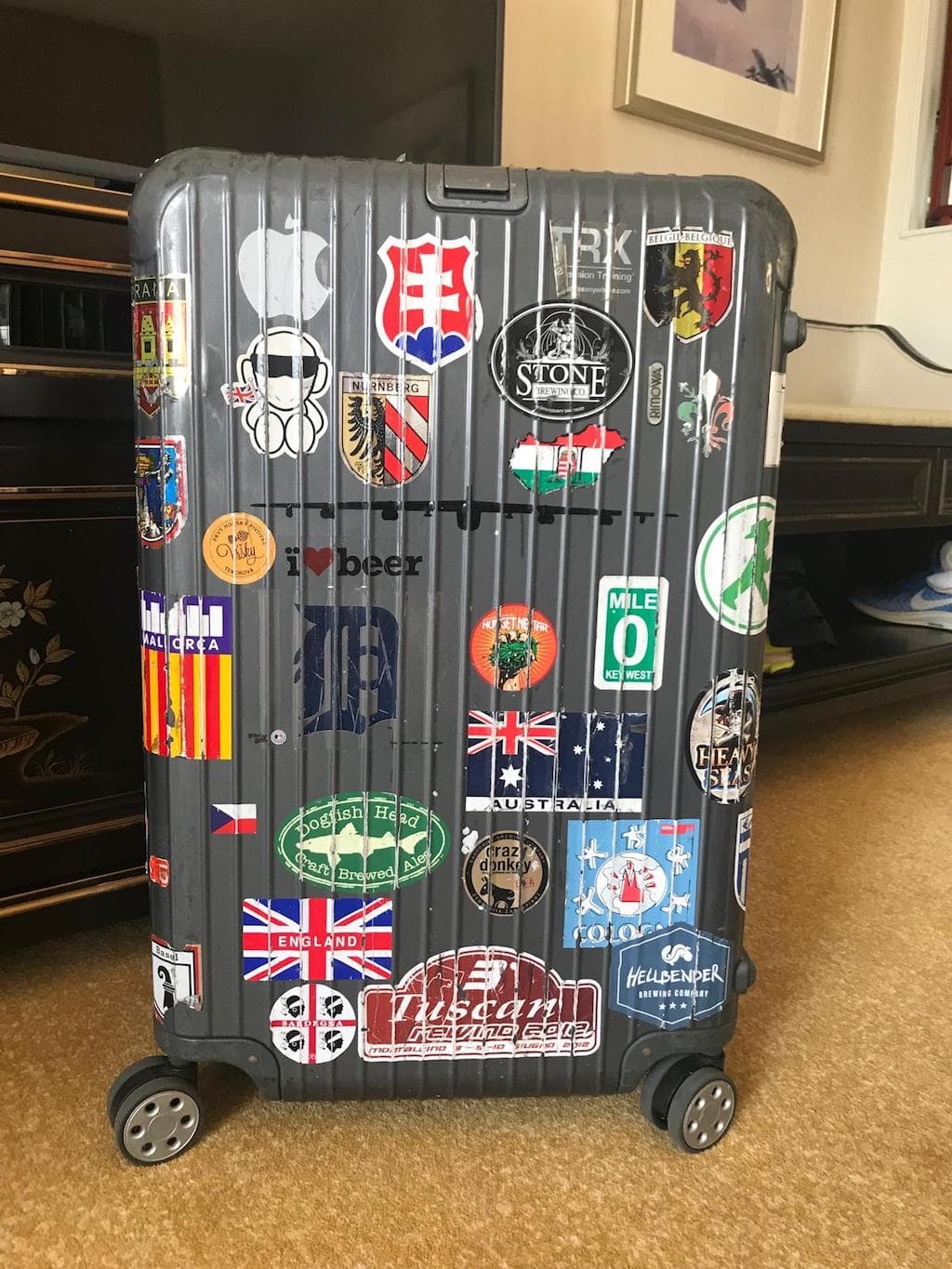
Mike’s Rimowa – the photo was taken literary on the other side of the world, in China
I bought my first Rimowa over 7 years ago in the USA after owning decent, but ultimately disposable luggage. I now have 3 different sizes. This piece is my original and I decided to place stickers on it like a Rimowa ad I saw in a magazine. This baby has been all over the world and has done over a million miles – there’s zero reasons to replace it and I consider it a trusty companion. It’s lightweight (why I chose it over the aluminum), spacious and amazingly well-built – after a year’s worth of travel, the entry price was long forgotten.
Gerard Nijenbrinks
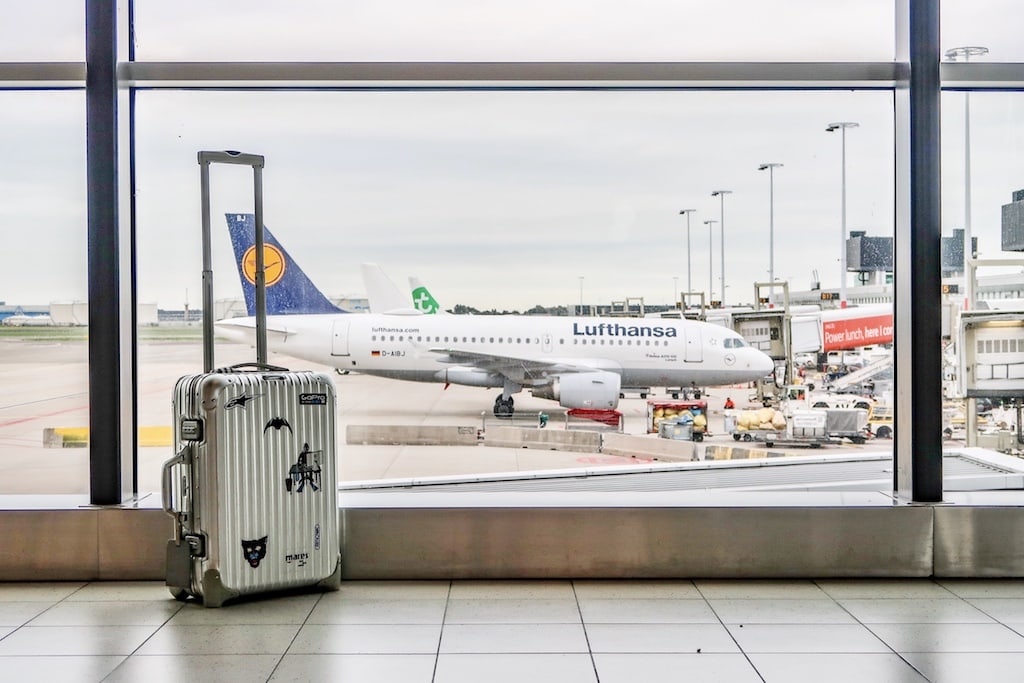
Globetrotter Gerard and his Topas
It must have been ages ago that I bought my Rimowa. Well, ages, at least like 20 years or so. It was the last suitcase I’ve bought, I can’t even remember what brand of a suitcase I used before this one. In my opinion, I never ever have to buy another suitcase as well.
My Rimowa has seen most corners of the world, and that slightly shows. But this is what I call character, and I don’t see that it harms its functionality. It’s the only suitcase I use. Whether for business or leisure, on worldwide or European flights, I always travel light and my cabin size Rimowa takes all I need.
Bert Buijsrogge
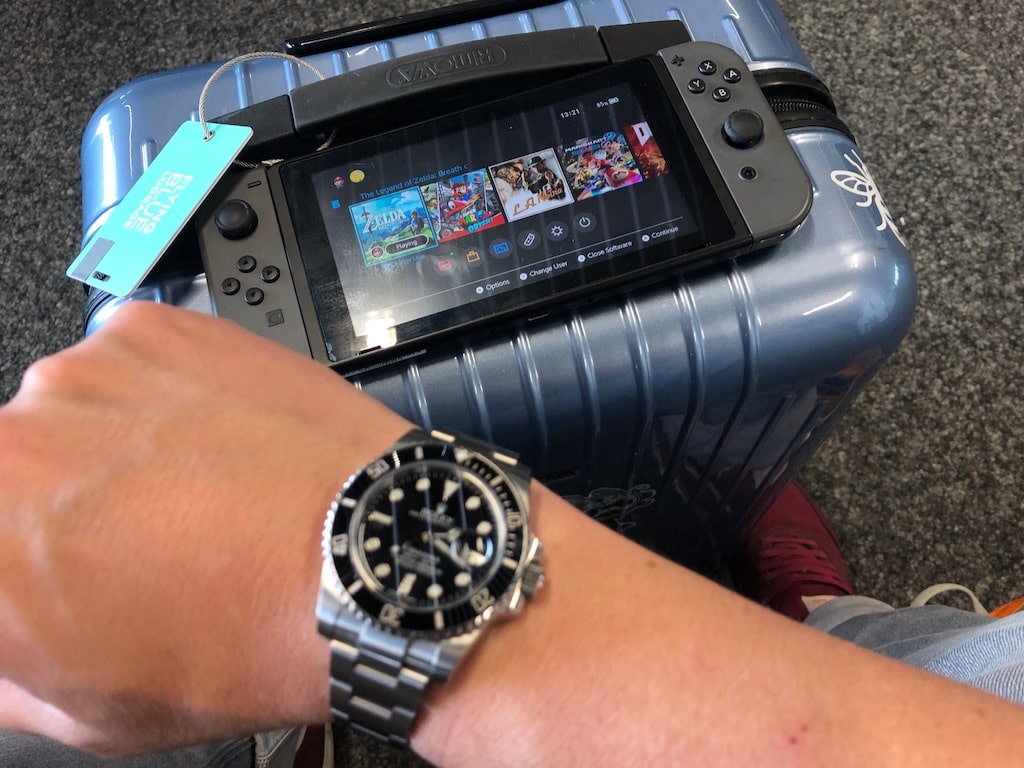
Bert’s travel essentials
After many trips, I finally decided to invest in a proper trolley which had to be lightweight (under 2 kilos) and classify as carry-on luggage. There aren’t many options other than Rimowa and Samsonite when you are looking for a hardshell. In the end, I went to a local shop to try them both and ended up with the Rimowa Salsa Air. In my book, it looks better and is more comfortable in use. Both sides have a compartment with a zip and in-between is a few centimeters left which is perfect for storing your jacket and the 1L bag of liquids during trips. They don’t come cheap but with the ease of use, the price tag is quickly forgotten. Should have bought one earlier.
George Cramer
George Cramer is Cartier collector & specialist and contributes to various titles.
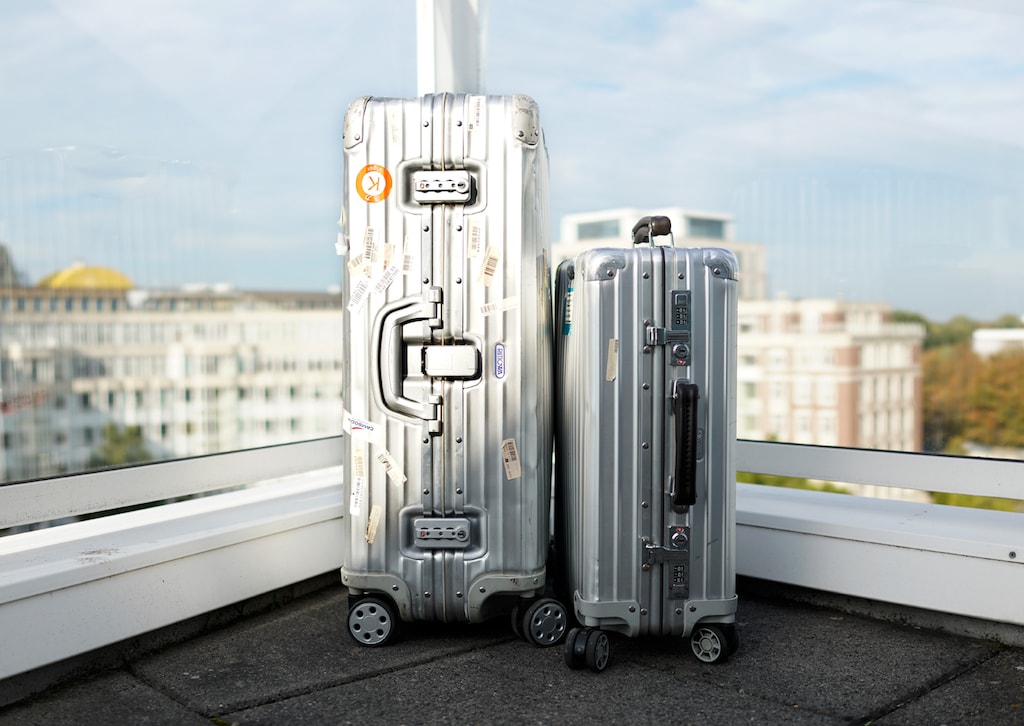
Geo’s set with tons of character
In the eighties when I was working for PolyGram records I had to go to the US a lot.
It was here where I bought my first aluminum suitcase. Not exactly because they were strong, but more because of the smooth and streamlined ecstatics. It took me until the 90’, to find the four-wheel Rimowa Topas cases and that was a relief since I make long trips and like to travel with a big case. For a long weekend out, I added a four-wheel carry-on, from the Classis series, that has seen loads of places in the meantime. I prefer the aluminium cases over the plastic ones because the aluminium ages beautifully.
Kristian Haagen
Kristian Haagen is freelance watch journalist, co-founder of 8past10 and author of many watch books.
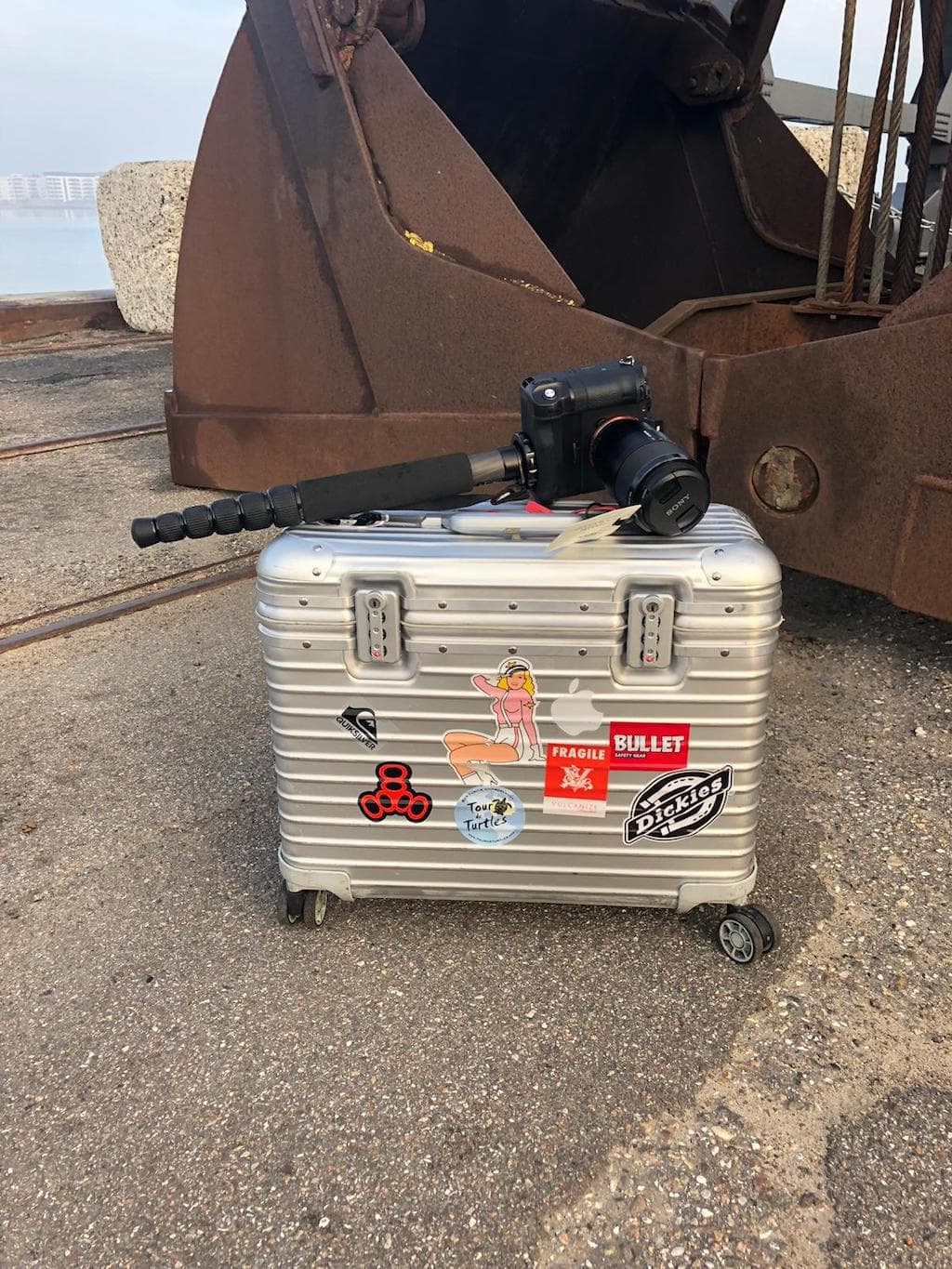
If you ever met Kristian at a watch show you surely remember his annoying habit of taking this bag everywhere he goes 🙂
I have always been a fan. The rugged design goes well with a Land Rover Defender, cameras and Randolph Engineering shades. You know…stuff I Iike and wear.
I store all my photo equipment in Rimowas and had special compartments made to fit my needs. Bought some of my Rimowas at the local luggage store, some online. The vintage ones I tracked down online as well.
There seem to be a growing bashing of Rimowas since LVMH took over. At least in the airports. My suitcases more often than before come back beaten and dented like there is a “kill the Rimowa” competition with the luggage handling crews. Piss annoying! But they have yet to actually destroy one.
Wei Koh
The founder of Revolution Magazine and The Rake sent us this image of his Rimowa luggage.
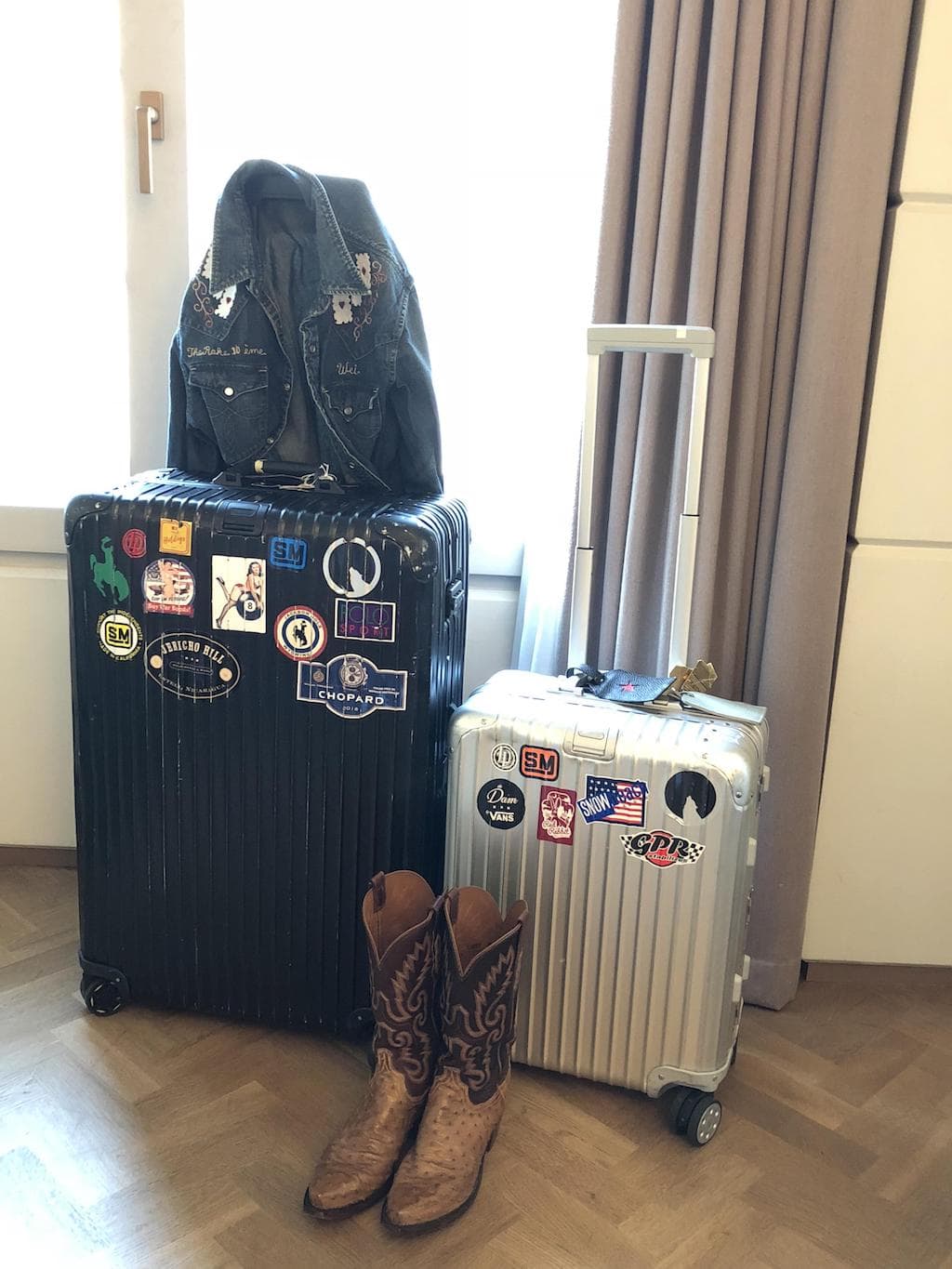
Wei also sent us his gear from a few weeks ago.
Balazs Ferenczi (Yours Truly)
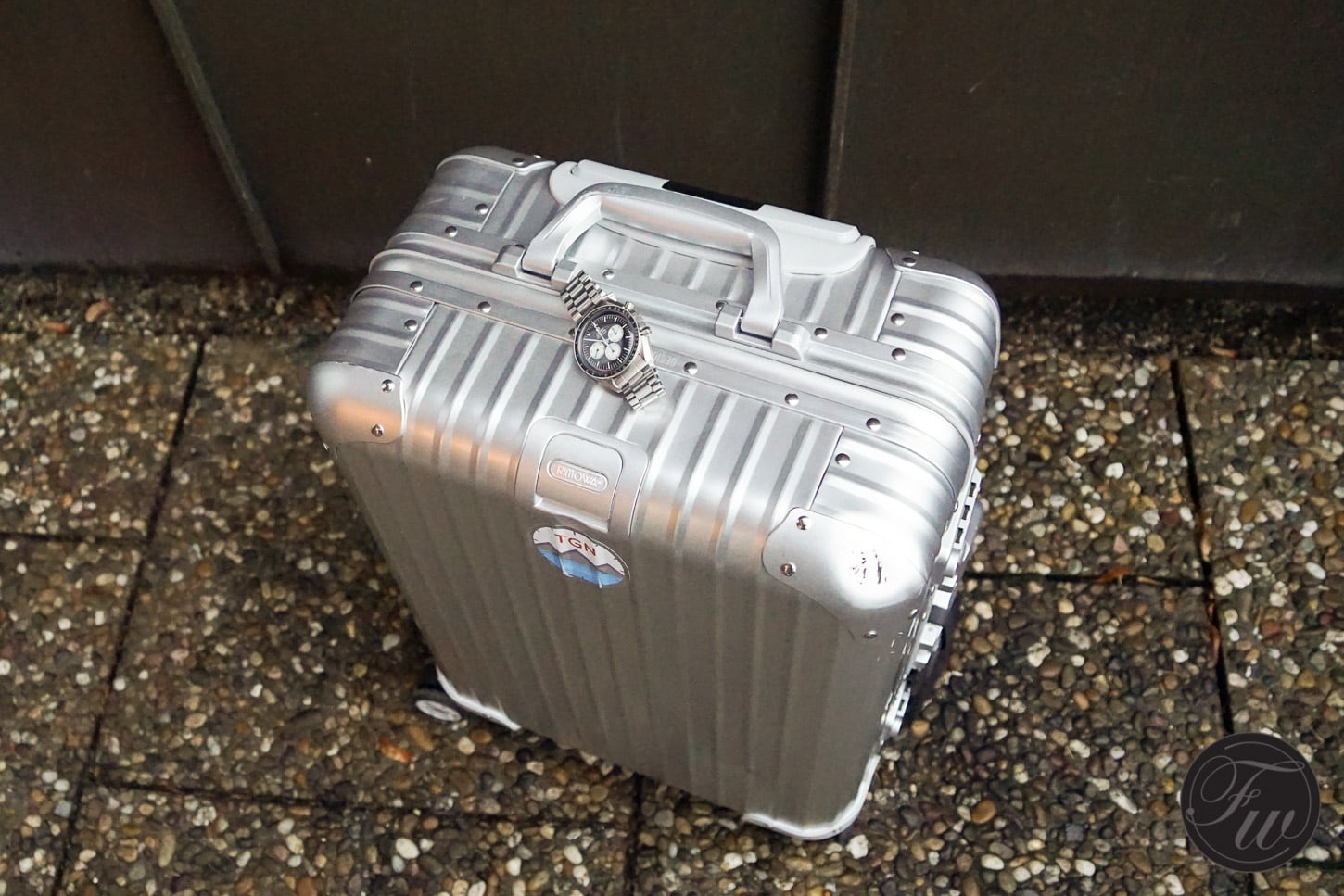
Still stickerless, but this is about to change
For me, the decision to finally “pull the trigger” on them was heavily influenced by what my colleagues have told me in the past. I also did my research on the subject and while the suitcase I used at the time was perfectly fine I still felt like I need to get one. Like RJ and Bert, I also have a Salsa polycarbonate that I use when I travel for longer periods of time as it’s the 63L version. I use a Topas Cabin Multi Wheel as my hand luggage. All in all, I can say that they don’t only look good but are super light, sturdy and well-made. Money well spent on that one.
If you enjoyed reading this special article you might not want to miss our previous ones. Here’s an interesting read about the pinky ring. Yes, you read it right.
Should you wish to visit Rimowa’s website, follow this link.
